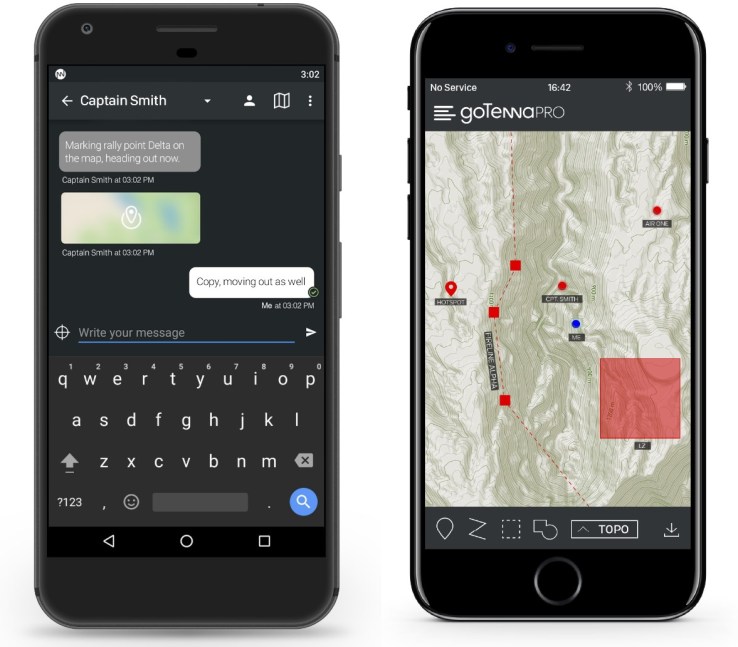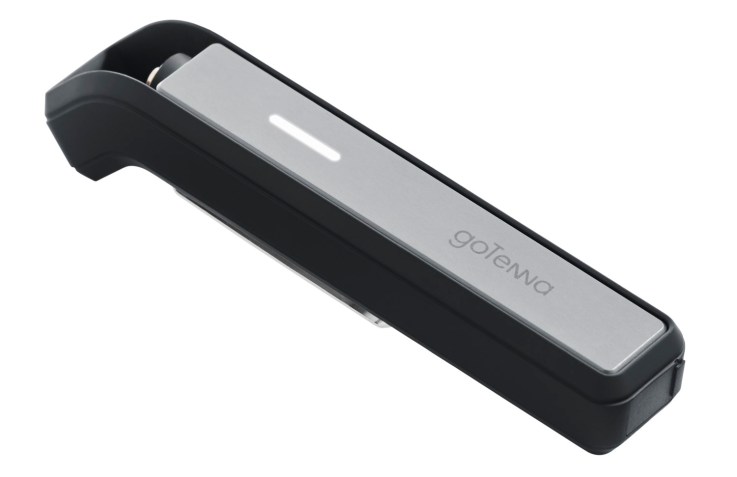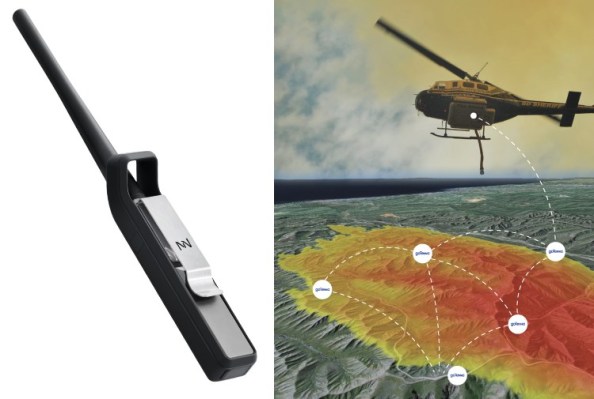Keeping in touch when there’s no communications infrastructure for one reason or another is nice for you and me, but critical for disaster response, forest fire control and military operations. GoTenna wants its new Pro device to be part of that by providing powerful, reliable, off-grid comms in a package a fraction the size and weight of existing systems.
You might remember the original goTenna, a device the size of a candy bar that connected with your phone over Bluetooth, then used walkie-talkie frequencies to let you message and exchange GPS coordinates with other goTenna-equipped phones up to a few miles away. It’s a handy device for backpacking, power outages and that sort of thing — but goTenna CEO Daniela Perdomo said that it literally only took minutes after the product’s announcement for more serious players to express interest.
Park rangers, firefighters, NGOs whose workers go to impoverished and war-torn areas — they all liked the idea of the goTenna as an adjunct to existing mesh radio systems made by big companies like Motorola, BAE, Lockheed and the like. These systems let you plop down a base station and then have smaller units carried around by people in the unit. Boom, an ad-hoc network only your team can access — but not only are the these devices commonly clunky, they’re also expensive as hell: think a few thousand bucks a unit for basic options. The market size is in the tens of billions.
“Search and rescue, military, aid organizations… they use these things every day. It’s like their primary mode of communication,” Perdomo said. “But there are some out there, big NGOs even, they’re priced out the market. Or sometimes you’ll have coalition forces or groups that can’t communicate with each other because the product they use isn’t available overseas.”
Those systems, it seems, are in need of a serious competitor, which Perdomo aims to give to them.
 The Pro is a lot like the original goTenna, except because the original was a consumer device, it had to be limited (FCC regulations say) in certain ways: primarily the frequencies it could access and the power it could transmit with. By designing and making the Pro available to… you know, pros, the company can give the device access to a full software-defined radio stack with a range of VHF and UHF frequencies (142-175MHz and 445-480MHz if you’re curious), plus a much higher transmission power (5 watts).
The Pro is a lot like the original goTenna, except because the original was a consumer device, it had to be limited (FCC regulations say) in certain ways: primarily the frequencies it could access and the power it could transmit with. By designing and making the Pro available to… you know, pros, the company can give the device access to a full software-defined radio stack with a range of VHF and UHF frequencies (142-175MHz and 445-480MHz if you’re curious), plus a much higher transmission power (5 watts).
It’s also been further ruggedized and given a fat battery that should last 60 hours or so. And because it uses the SMA standard for antennas, you can stick a monster aerial on there and get miles of range, no special base station needed. The Pro is light enough you could even stick it on a drone and increase your range even further.
 One company was so excited about the Pro that they posted about it well ahead of the announcement (Perdomo didn’t seem mad). You can see in Technosylva’s illustration (it’s for a fire response logistics system) up top that the in-mesh communications can also hop to a chopper or base station where they can be blasted out over LTE, another app or what have you, and information can come in that way too. Lots of interoperability here.
One company was so excited about the Pro that they posted about it well ahead of the announcement (Perdomo didn’t seem mad). You can see in Technosylva’s illustration (it’s for a fire response logistics system) up top that the in-mesh communications can also hop to a chopper or base station where they can be blasted out over LTE, another app or what have you, and information can come in that way too. Lots of interoperability here.
The hope is that at $500 each, these things could be bought by the dozen rather than provisioned one at a time. At that price, NGOs won’t go broke, and for the military, they’re practically disposable. You don’t get voice communication, but text and location are what you need most of the time. Who calls anyone any more anyway?
There’s a slight catch. This is FCC-approved for use only by people with licenses for the business and public safety radio bands. Unless you have said license, you’re not supposed to have one of these. Now technically, you can still buy one. But operating it without a license would technically be illegal.
Forewarned is forearmed, as they say, and, with it said, it should also be said that you can now fore-order the goTenna Pro over at the company’s website.
